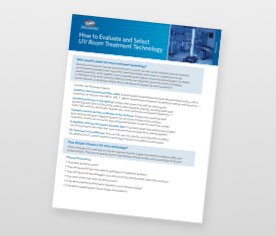 |
| A Guide to Navigating Industry UV Claims
|
|
UV technology can be difficult to evaluate due to inconsistent and contradictory information. Find out about key factors your facility should consider, including:
|

|
|
Clinical Evidence: Is device efficacy supported by reliable 3rd party data?
|

|
|
Safety: Does the device protect staff and patients from UV exposure and lamp breakage?
|

|
|
Quality: Does the manufacturer develop robust, reliable UV technology?
|

|
|
Affordability: How does the investment compare to the cost of infections in your facility?
|

|
|
Support: Does the manufacturer help with training, implementation and maintenance?
|
|
|
 |
| Detecting and Debunking UV Myths
|
|
UV technology can be difficult to evaluate due to inconsistent and contradictory information. Find out about key factors your facility should consider, including:
|

|
|
Short Cycle Times: Claims should include effective distance and pathogen reduction data.
|

|
|
Single Placement Protocols: The device must be in line of sight to be effective.
|

|
|
Surface Compatibility: There should be proof surface and equipment compatibility were tested.
|

|
|
Broad Spectrum: The peak wavelength for UV-C efficacy is 254nm. Broader spectrums waste energy.
|
|
|